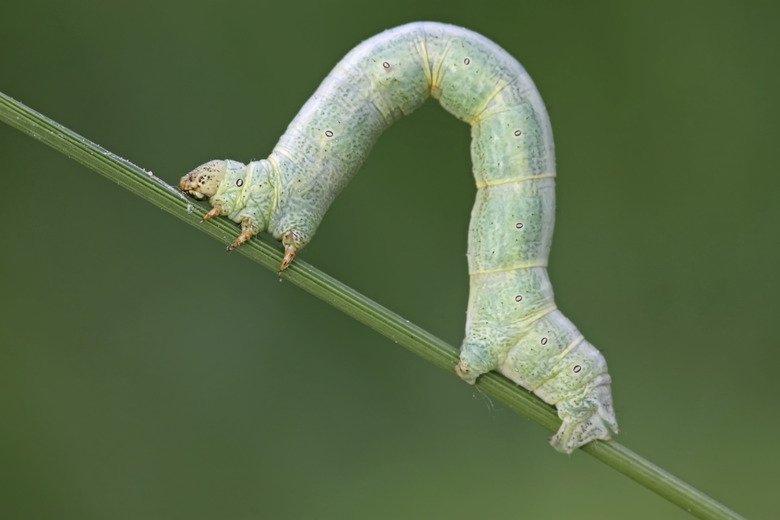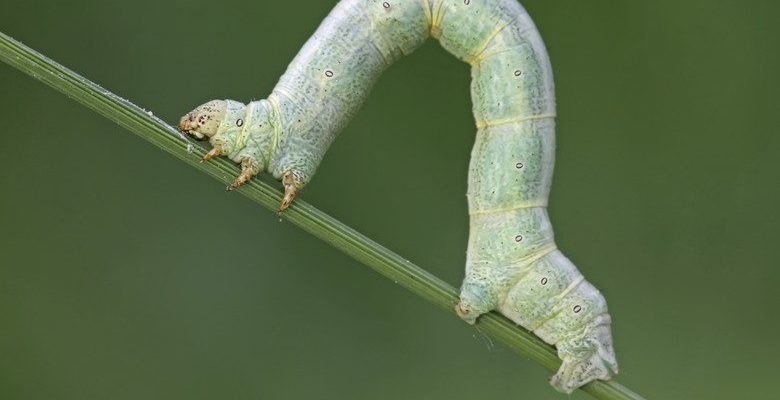
Understanding these patterns can be surprisingly interesting. It’s a bit like solving a mystery; the clues are all around us, just waiting to be noticed. Think of inchworms as the ultimate indicators of seasonal change. As the temperatures rise and the plants begin to bloom, these little creatures pop up in droves. So, grab your favorite mug of coffee, and let’s figure out the fascinating ways that inchworms emerge with the seasons!
What Are Inchworms?
Inchworms, which are actually the larvae of certain moths, have an interesting way of moving that resembles measuring. They “inch” their way along by arching their bodies and pulling themselves forward. It’s a little like watching a tiny green caterpillar perform a slow acrobatic routine. You might recognize them by their unique looping movement, which gives them their name.
There are many different species of inchworms, but they all share similar characteristics. They often have a slender body and blend well into their environment, making them hard to spot. This camouflage helps them avoid predators. You may find them munching on leaves, which is essential for their growth. **Inchworms are important contributors to the ecosystem**, helping to control plant life and serving as food for birds and other wildlife.
As they grow, inchworms undergo metabolism changes, which allow them to thrive during specific seasons. Their behavior and life cycle are closely linked to the temperature and availability of food sources. Understanding when these changes take place can give us a glimpse into their world.
When Do Inchworms Emerge?
Inchworms generally emerge in the spring as temperatures begin to rise. **This timing isn’t just random; it’s a carefully orchestrated sequence dictated by nature’s clock.** As days grow longer and warmer, inchworms sense the change—typically between late March and early May, depending on the region.
You might be wondering what triggers this emergence. It all starts with the temperature. Inchworms are quite sensitive to environmental changes. Once they detect warmer weather, the larval metabolism kicks in, prompting them to emerge from their winter hiding spots. For instance, when temperatures consistently hover around 50°F (10°C), you’re likely to see inchworms starting to crawl out.
Their emergence is also timed with the blooming of vegetation. As new leaves sprout, inchworms have fresh food sources to munch on. This seasonal synchronization ensures they have both the warmth and the nutrition they need to thrive.
Factors Influencing Emergence Patterns
Several factors can influence when inchworms decide to make their grand entrance. Here are a few key players in their seasonal story:
- Temperature: As we mentioned, warmer temperatures signal inchworms it’s time to emerge. They usually prefer temperatures above 50°F (10°C) to become active.
- Humidity: Moisture is essential for survival. Inchworms thrive in humid conditions, which are often present during spring. Higher humidity can signal that it’s time to break out of winter dormancy.
- Food Availability: The sprouting of leaves not only provides food but also shelter. Inchworms tend to emerge when they can find ample food sources nearby.
All these factors come together to create a perfect storm for inchworm emergence. It’s like throwing a party—if the weather is nice, the food is prepared, and everyone knows the time, you’re bound to have a good turnout!
The Life Cycle of Inchworms
Understanding the **life cycle** of inchworms can help us appreciate their emergence even more. It starts when adult female moths lay eggs on the host plants. The eggs hatch into tiny caterpillars we know as inchworms.
Stages of Development
1. **Egg Stage:** This is where it all begins; eggs are often laid in clusters on or near host plants.
2. **Larval Stage:** Once the eggs hatch, the inchworms emerge and begin feeding on leaves. This stage can last several weeks to months, depending on the species and environmental conditions.
3. **Pupal Stage:** After they’ve fed sufficiently and grown, inchworms find a safe spot to pupate, transforming into a chrysalis.
4. **Adult Moths:** Finally, after a period of transformation, moths emerge to repeat the cycle.
This cyclical nature shows how interconnected all life is. The emergence patterns of inchworms not only affect their own survival but also impact the entire ecosystem.
Why Emergence Patterns Matter
You might be asking yourself, “Why should I care about inchworm emergence patterns?” The answer is simple. Studying these patterns can offer crucial insights into the health of our ecosystems. When inchworms emerge in larger numbers, it could indicate a healthy environment, with ample food and suitable conditions.
Moreover, understanding these patterns can help gardeners and farmers manage their plants better. For instance, if inchworms are emerging early, it might signal that certain pests could also be on the prowl. Keeping track of these changes can help in planning for pest control measures, ensuring that crops and gardens remain healthy.
Additionally, inchworms play a role in the food web. Their emergence provides food for various predators, like birds and small mammals. Recognizing these patterns can help us appreciate how interconnected and delicate our ecosystems truly are.
Inchworm emergence patterns are more than just a seasonal phenomenon; they’re a beautiful representation of nature’s rhythm. From the way they move to the precise timing of their appearances, inchworms showcase how life adapts to its environment. By understanding their emergence, not only do we gain insight into their lives, but we also learn about the health of our ecosystems.
So, the next time you’re out and about, keep an eye out for these tiny inching critters. They might be small, but they’re a big deal in the world of nature! And who knows? You might just find yourself reveling in the wonder of the natural world, sipping coffee, and pondering the intricate connections that keep our ecosystems alive and thriving.

